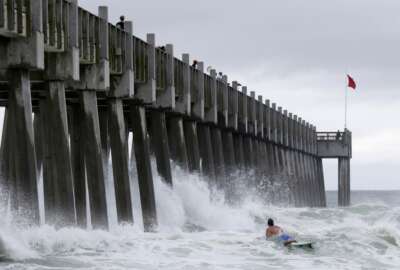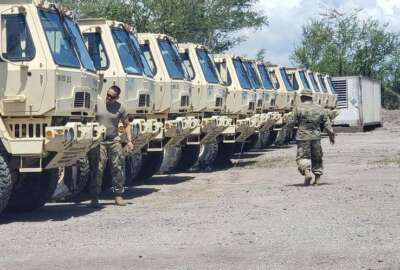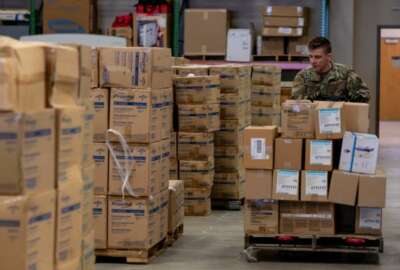
FEMA, first responders emphasize resilient, redundant communications ahead of storm season
Viable communications are necessary for disaster response efforts. That’s why FEMA’s 2018-2022 Strategic Plan puts an emphasis on resiliency and redundancy for...
The internet is the most powerful tool for communication humanity has ever had at its fingertips. But during a natural disaster, it can also be the weakest link.
Phone, cable and fiber connections are all vulnerable to hurricanes, tornadoes, forest fires and floods. And wireless is only wireless on a local basis; once a signal hits the cell tower or the Wi-Fi router, data is relying on the same wired infrastructure for the rest of its journey.
Yet viable communications are necessary for disaster response efforts. That’s why FEMA’s 2018-2022 Strategic Plan puts an emphasis on resiliency and redundancy for these systems.
“There are inherent risks to relying heavily on these communications systems. We must understand their interdependencies and the potential cascading impacts that a failure could cause,” the strategic plan states. “FEMA must work with our partners to assess the mission impacts of losing the ability to reliably communicate and prioritize meeting all-hazards communications needs. Continuity planning efforts across levels of government must also address vulnerabilities to ensure uninterrupted communications capabilities in all response operations.”
Steve Goldstein, the National Oceanic and Atmospheric Administration’s liaison to FEMA, said constant communication is a daily and necessary part of NOAA’s ability to warn FEMA about potential upcoming severe weather events. Senior leadership gets a briefing every morning, and from there, the data filters down and never stops flowing. Key messages are adjusted to FEMA’s activation criteria, and Google Docs help NOAA forecasters maintain consistency.
“We are constantly monitoring chat software and collaboration software to ensure that we are producing consistent messaging. And the information flows both ways,” Goldstein said in an interview with Federal News Network. “A great example today is a lot of flash flood watches have been issued. If, for example, some of the flooding in Louisiana turns out to be more severe than expected, the FEMA Region will communicate that to our southern region headquarters, which will then communicate it to National Weather Service headquarters. And then to me as the FEMA interagency liaison, so through a series of written documents, phone calls and regularly scheduled collaboration, we coordinate with each other both ways 24/7, 365 days a year.”
Read more: Technology News
Goldstein said NOAA’s continuity plans account for redundant communication systems in case a natural disaster affects one of its facilities. In addition to phone and internet, NOAA also employs satellite capabilities to ensure that the flow of data never gets interrupted, and its forecasts go where they are needed.
And that kind of continuity planning filters down to programs that operate on a more local level. Andy Bailey, an NWS warning coordination meteorologist in Kansas City/Pleasant Hill, said the StormReady program, which helps local communities benchmark their preparedness for extreme weather events, requires StormReady certified localities to maintain separate, redundant communications systems at multiple 24-hour warning locations, including 911 dispatch centers and emergency operations centers.
“What we look for is the variety and number of different communication systems. For instance, many of the locations that are storm ready have a two-way radio system that they can communicate directly with us. And obviously, that’s in addition to phone lines, which may be prone to go down during storms,” Bailey said. “We also heavily encourage our partners to be on National Weather Service chat, which is an internal chat system that includes the broadcast partners that we have: Television meteorologists, emergency managers, as well as us at the National Weather Service. There’s NAWAS, which is the national warning and alerting system that many entities are on and the National Weather Service is on as well, as well as possibly ham radio as a back up to communication.”
That kind of preparation ahead of extreme weather events is critical, but so is ensuring first responders have the capabilities to coordinate both amongst themselves, and with affected communities. That’s why FEMA’s Disaster Emergency Communications division developed its Mobile Emergency Response Support units.
“To ensure effective communication and coordination capabilities, FEMA develops, maintains, and employs the capability to provide integrated tactical voice, data, and video communications systems and services before, during, and after an incident,” FEMA’s Strategic Plan states. “These deployable communications assets utilize state-of-the-art, resilient, and redundant communications equipment and architecture to organize a successful response in the most austere environments.”
Essentially large vans packed to the brim with communications equipment, these vehicles provide FEMA with multiple redundant communications systems to coordinate disaster response on the scene, including:
- Various forms of radio equipment, including crossbanding capabilities
- Satellite for voice, data and video
- Line-of-sight and near-line-of-site microwave systems for data transfer
The Coast Guard takes a similar approach, according to Vice Adm. Steven Poulin, who took over as commander of the Coast Guard Atlantic Area last month. But because of the unique mission of the Coast Guard, Poulin breaks it down into two perspectives.
Read more: Coast Guard News
The first is communications with the public. For the Coast Guard, this largely revolves around locating and contacting other ships. That includes the standard maritime distress radio frequency, supplemented by infrastructure called Rescue 21, which allows the Coast Guard to record those radio calls in order to account for every detail, and use them to triangulate locations based on the radio signal.
The other perspective, Poulin said, involves communicating and coordinating with other first responders. For this, the Coast Guard uses mobile communications trailers, similar in concept to FEMA’s MERS vehicles, which can be deployed ahead of storms. The Coast Guard also employs phone, internet and satellite as available.
“The key is just to ensure that you have a redundant communications capability which is what we had built into our forces,” Poulin said in an interview with Federal News Network. “That’s whether you’re afloat or whether you’re ashore. And we try and exercise those as much as possible. We don’t wait for a disaster. On many of those systems, we communicate routinely. The mobile trailers that I talked about, we use those for any number of different events where we need to supplement communications or ensure that we have redundant communications.”
Copyright © 2025 Federal News Network. All rights reserved. This website is not intended for users located within the European Economic Area.
Daisy Thornton is Federal News Network’s digital managing editor. In addition to her editing responsibilities, she covers federal management, workforce and technology issues. She is also the commentary editor; email her your letters to the editor and pitches for contributed bylines.
Follow @dthorntonWFED





